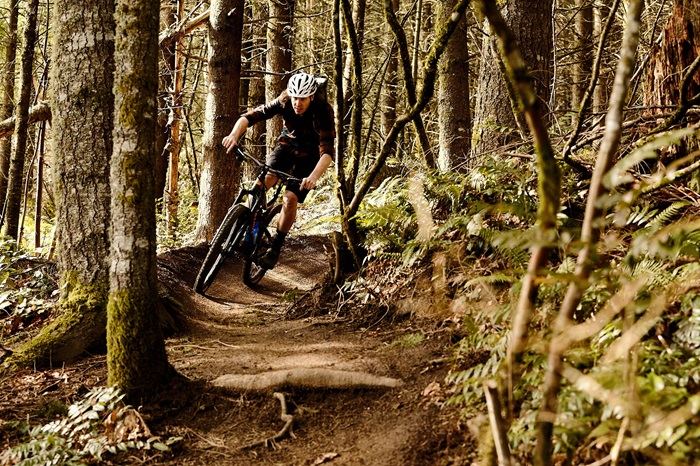Mountain biking is an exhilarating and demanding sport that combines the thrill of outdoor adventure with the physical challenges of off-road cycling. Whether you’re a seasoned rider or a beginner looking to take your skills to the next level, getting in shape for mountain biking is crucial. This comprehensive guide will walk you through the steps to prepare your body and mind for the rigors of the trail, ensuring you enjoy the ride and perform at your best.
Understanding the Demands of Mountain Biking
Mountain biking requires a unique blend of endurance, strength, agility, and mental toughness. Riders must navigate varied terrain, including steep climbs, rocky descents, and technical trails. To meet these demands, a well-rounded fitness regimen is essential.
Physical Requirements
Cardiovascular Endurance: Sustained energy output for long rides and challenging climbs.
Muscular Strength: Power for pedaling, handling the bike, and overcoming obstacles.
Core Stability: Essential for maintaining balance and control on uneven terrain.
Flexibility and Mobility: Important for maneuverability and reducing the risk of injury.
Mental Toughness
Focus and Concentration: Navigating technical sections and making quick decisions.
Determination and Resilience: Pushing through fatigue and challenging conditions.
Creating a Comprehensive Training Plan
A successful training plan for mountain biking should include cardiovascular workouts, strength training, flexibility exercises, and mental conditioning. Here’s a step-by-step guide to structuring your training regimen:
Cardiovascular Conditioning
Cardiovascular fitness is the foundation of mountain biking endurance. Incorporate the following activities into your routine:
Interval Training: High-intensity interval training (HIIT) improves cardiovascular efficiency and replicates the burst-and-recover nature of mountain biking.
Long Rides: Build endurance with long, steady-state rides on varied terrain. Aim for at least one long ride per week.
Cross-Training: Activities such as running, swimming, and rowing can enhance cardiovascular fitness and provide a break from cycling.
Strength Training
Building muscle strength enhances your ability to handle tough trails and improves overall biking performance. Focus on these key areas:
Leg Strength: Exercises like squats, lunges, and deadlifts target the muscles used in pedaling and climbing.
Upper Body Strength: Push-ups, pull-ups, and rows strengthen the muscles used for bike handling and stability.
Core Strength: Planks, Russian twists, and leg raises build the core stability necessary for balance and control.
Flexibility and Mobility
Improving flexibility and mobility helps prevent injuries and enhances bike handling skills. Incorporate these practices:
Dynamic Stretching: Warm up with dynamic stretches to prepare your muscles for exercise.
Yoga: Regular yoga sessions improve flexibility, balance, and mental focus.
Foam Rolling: Use a foam roller to release muscle tension and improve mobility.
Mental Conditioning
Mental toughness is crucial for overcoming the challenges of mountain biking. Develop your mental game with these strategies:
Visualization: Imagine yourself navigating difficult trails and overcoming obstacles.
Mindfulness and Meditation: Practices that enhance focus and reduce stress can improve your performance.
Goal Setting: Set achievable goals to stay motivated and track your progress.
Nutrition and Hydration
Proper nutrition and hydration are essential for peak performance and recovery. Follow these guidelines:
Pre-Ride Nutrition
Carbohydrates: Fuel your body with complex carbohydrates such as oats, brown rice, and whole-grain bread.
Protein: Include lean proteins like chicken, fish, and legumes to support muscle repair and growth.
Healthy Fats: Incorporate sources of healthy fats, such as avocados, nuts, and olive oil.
During the Ride
Hydration: Drink water or electrolyte beverages to stay hydrated.
Energy Snacks: Consume easily digestible snacks like energy bars, gels, and fruits to maintain energy levels.
Post-Ride Recovery
Protein and Carbs: Replenish glycogen stores and repair muscles with a combination of protein and carbohydrates.
Hydration: Continue to hydrate with water or recovery drinks.
Rest and Recovery
Rest and recovery are crucial components of any training plan. Your body needs time to repair and strengthen itself after workouts. Incorporate these practices:
Rest Days
Scheduled Rest: Include at least one full rest day per week to allow your body to recover.
Active Recovery: Engage in low-intensity activities like walking, swimming, or gentle yoga on active recovery days.
Sleep
Quality Sleep: Aim for 7-9 hours of sleep per night to support recovery and overall health.
Sleep Hygiene: Establish a regular sleep routine and create a restful environment.
Practical Tips for Mountain Biking
Bike Fit and Setup
Proper Fit: Ensure your bike is properly fitted to your body to prevent injuries and enhance performance.
Maintenance: Regularly check and maintain your bike to keep it in optimal condition.
Riding Techniques
Climbing: Maintain a steady pace, shift your weight forward, and use a lower gear for efficient climbing.
Descending: Keep your weight back, stay relaxed, and use both brakes for controlled descents.
Cornering: Lean into turns, keep your eyes on the exit, and maintain a steady speed.
see also: Road Cycling Vs. Mountain Biking: Which Is More Dangerous?
Safety and Preparedness
Protective Gear: Always wear a helmet, gloves, and appropriate protective gear.
Trail Etiquette: Follow trail rules, yield to other users, and respect the environment.
Emergency Preparedness: Carry a first-aid kit, multi-tool, and know basic repair skills.
Conclusion
Getting in shape for mountain biking requires a comprehensive approach that combines cardiovascular conditioning, strength training, flexibility exercises, and mental conditioning. By following the guidelines outlined in this article, you can enhance your performance, enjoy your rides more, and stay safe on the trails. Remember, consistency is key, and listening to your body is crucial. Happy riding!
- What Causes Lower Back Pain While Mountain Biking
- 8 Best Mountain Biking In The Us
- What To Wear Mountain Biking In The Cold

